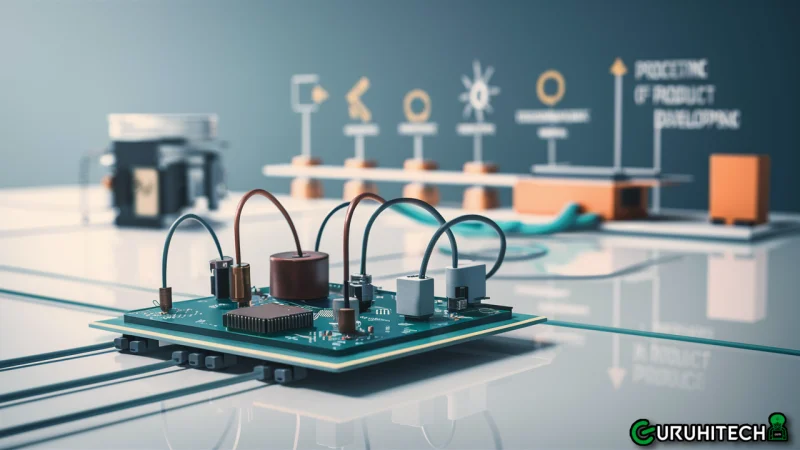The Importance of PCB Prototyping in Product Development

In a world where technology evolves at lightning speed. Product development is a constant race to stay ahead of the curve. One of the crucial steps in this process is PCB prototype. Practice is often overlooked by the general public.
Table of Contents
- What is PCB Prototyping?
- Why is PCB Prototyping Necessary?
- The Role of PCB Prototype Services
- How Does PCB Prototyping Work?
- Benefits of PCB Prototyping
- Challenges in PCB Prototyping
- The Evolution of PCB Prototyping
- Future Trends in PCB Prototyping
- Cost Considerations in PCB Prototyping
- Conclusion: Building Tomorrow Today
1. What is PCB Prototyping?
Before diving into the importance of PCB prototyping, visit the website for more info. PCB stands for Printed Circuit Board, the heart and soul of electronic devices. A PCB prototype is a mock-up or an early version of the circuit board used in a device.
2. Why is PCB Prototyping Necessary?
You might wonder why manufacturers don’t go ahead and build products without prototyping. PCB prototyping serves as a testing ground for new ideas and innovations. It allows engineers to experiment, make mistakes, and refine their designs. Without the risk of costly mass-production errors.
3. The Role of PCB Prototype Services
PCB prototyping isn’t a solo act; it often involves specialized services. PCB Prototype Services are companies dedicated to turning design concepts into tangible prototypes. They provide the expertise, equipment, and materials necessary to bring ideas to life. These services are the unsung heroes behind many of the gadgets we can’t live without.
4. How Does PCB Prototyping Work?
Imagine you’re designing a new smartwatch with various sensors and a compact design. PCB prototyping starts with creating a digital blueprint of the circuit board.
Specifying the placement of components, connections, and traces. Once the design is complete, it’s time for the magic to happen. Specialized machines etch the circuit onto a physical board. This physical prototype is then tested to ensure it functions as intended.
5. Benefits of PCB Prototyping
The benefits of PCB prototyping are manifold. It allows for:
- Rapid Iteration: Engineers can test quicks and refine their designs.
- Cost Savings: Identifying and fixing issues in the prototype. It is the phase that is far cheaper than during mass production.
- Quality Assurance: Prototypes help ensure that the final product meets quality standards.
- Innovation: It encourages creative problem-solving and innovation.
- Reduced Time to Market: Prototyping accelerates the development process.
6. Challenges in PCB Prototyping
While PCB prototyping offers many advantages, it’s not without its challenges. These include:
- Complexity: Designing intricate circuits can be challenging.
- Material Selection: Choosing the right materials is crucial.
- Testing Variability: Ensuring consistency in testing can be difficult.
- Cost Considerations: Prototyping costs can add up.
7. The Evolution of PCB Prototyping
The world of PCB prototyping has come a long way. In the early days, it was a painstaking manual process. Today, with the advent of advanced machinery and software. It has become faster, more precise, and accessible to a broader range of innovators.
8. Future Trends in PCB Prototyping
As technology continues to advance, so does PCB prototyping. We can expect:
- Miniaturization: Smaller, more powerful circuits.
- Sustainability: friendly-eco materials and practices.
- AI Integration: Smart circuits that adapt and learn.
- Faster Prototyping: Speedier development cycles.
9. Cost Considerations in PCB Prototyping
While PCB prototyping offers many benefits, cost considerations are always at the forefront. The price of prototyping depends on factors like complexity, materials, and volume. But, it’s essential to view these costs as an investment in product quality and success.
10. Conclusion: Building Tomorrow Today
In the fast-paced world of technology. PCB prototyping enables us to bring groundbreaking products to market. It’s the essential bridge between imagination and innovation. Allowing us to shape the future one circuit at a time.
FAQ’s
1. What’s the difference between PCB prototyping and mass production?
PCB prototyping is the process of creating a preliminary version of a circuit board. Test and refine the designs. Mass production involves manufacturing a large quantity of the final product.
2. Are PCB prototype services only for large corporations?
No, PCB prototype services are available to individuals, startups, and small businesses. They cater to a wide range of innovators with varying needs and budgets.
3. How long does PCB prototyping typical take?
The timeline for PCB prototyping can vary depending on complexity and demand. But, it’s generally faster than mass production since it focuses on a single prototype.
4. What happens if a prototype doesn’t work as expected?
If a prototype doesn’t meet expectations, it’s back to the drawing board. Engineers will analyze what went wrong, and make necessary adjustments. Create a new prototype until it functions as intended.
5. Can be PCB prototyping environments friendly?
Yes, as technology advances, there is a growing emphasis on PCB prototyping practices. This includes using recyclable materials, reducing waste, and minimizing energy consumption.
Ti potrebbe interessare:
Segui guruhitech su:
- Google News: bit.ly/gurugooglenews
- Telegram: t.me/guruhitech
- X (Twitter): x.com/guruhitech1
- Bluesky: bsky.app/profile/guruhitech.bsky.social
- GETTR: gettr.com/user/guruhitech
- Rumble: rumble.com/user/guruhitech
- VKontakte: vk.com/guruhitech
- MeWe: mewe.com/i/guruhitech
- Skype: live:.cid.d4cf3836b772da8a
- WhatsApp: bit.ly/whatsappguruhitech
Esprimi il tuo parere!
Ti è stato utile questo articolo? Lascia un commento nell’apposita sezione che trovi più in basso e se ti va, iscriviti alla newsletter.
Per qualsiasi domanda, informazione o assistenza nel mondo della tecnologia, puoi inviare una email all’indirizzo [email protected].
Scopri di più da GuruHiTech
Abbonati per ricevere gli ultimi articoli inviati alla tua e-mail.
